How do I make my rooms look professionally decorated? 10 expert-approved tips
Discover the secrets of how to make rooms look professionally decorated – from the experts
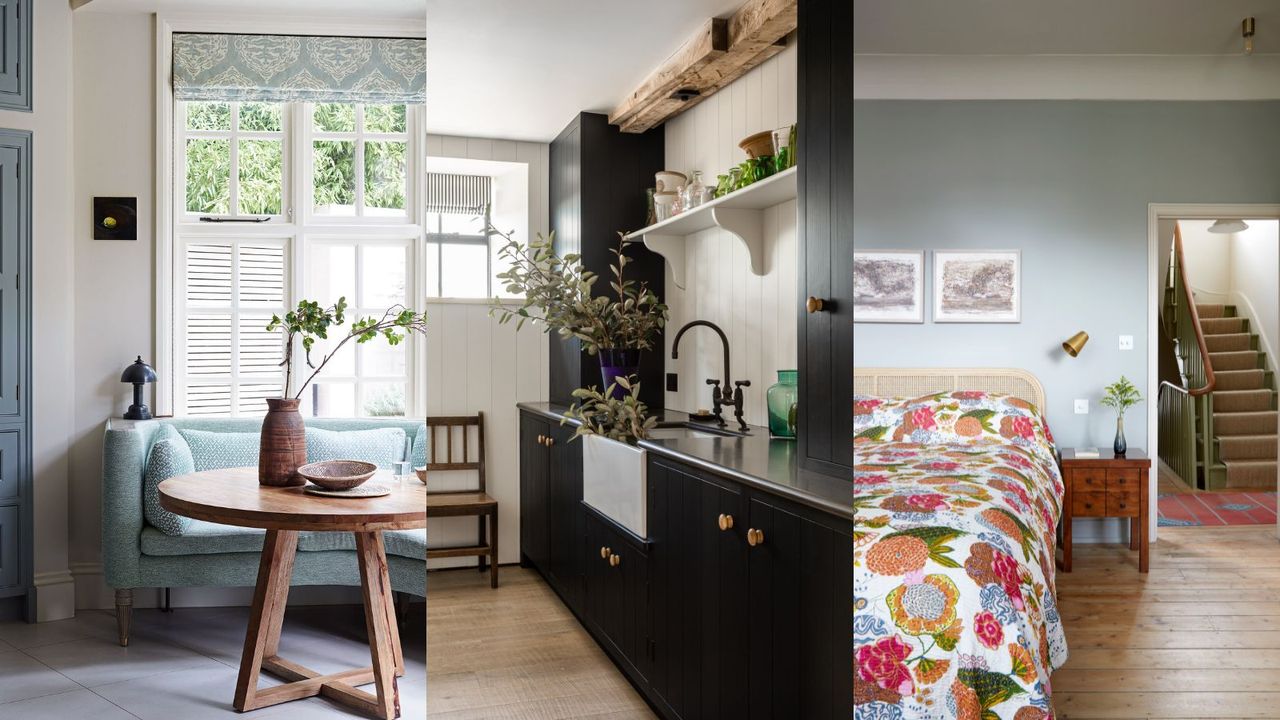

Asking the question, how do I make my rooms look professionally decorated? What are the principles designers use that elevate their interiors, ensure they’re beautiful and liveable, and make home designs cohesive?
Luckily, the professionals are generous enough to share their expertise with us and we’ve collected their wisdom here so you can make use of the fundamentals they employ in their designs.
These interior design tips will ensure rooms look professionally decorated, and your home’s a pleasure to live in.
How do I make my rooms look professionally decorated?
Designer interiors are something special, but replicating that elevated look is possible. Learn from the experts and make your rooms appear professionally decorated, plus expert ways to style a small house and how to make a small room look bigger. These are the details you need.
1. Balance the scales
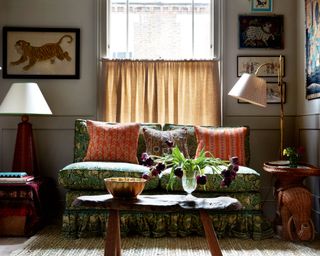
Avoid the frequent error Kristin Kong of K Kong Designs observes to make small rooms look professionally decorated.
‘Interior designers know the area needed between each piece in a room to feel just right and allow proper functioning of the layout,’ she explains. ‘Homeowners tend to under-scale items, particularly light fixtures and artwork. Artwork and lighting that are sized appropriately will make a statement. The bigger the better in most cases!’
2. Add trims
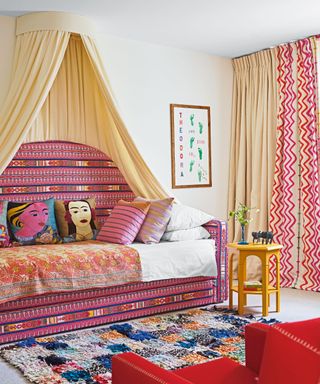
Pay attention to what seem like small elements of the room as well as the more sizeable pieces to replicate a professional’s interior. This is why your chosen window treatment ideas are so important.
‘Trims to lampshades, pillows, curtains and Roman blinds really give a designed rather than “off the shelf feel”, says interior designer Katharine Pooley. ‘I particularly love linen tapes rather than old school braids or pom-poms.’
3. Look to the floor
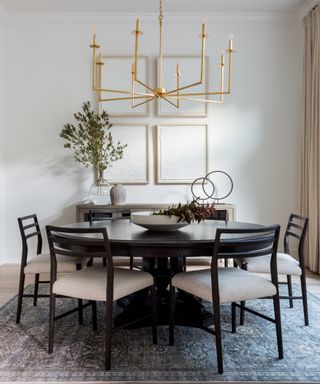
‘The use of rugs to designers are what noise-cancelling headphones are to commuters – a significant part of the design process,’ says Juliette Thomas, founder and director, Juliettes Interiors.
‘Excellent at differentiating and defining interiors, rugs help to zone the interior of a home for you and your guests, whilst adding grandeur. Naturally, with the straight edges and defined dimensions of rugs, they instantly add a dash of charm to any interior, taking it to the next level.’
4. Stay on trend
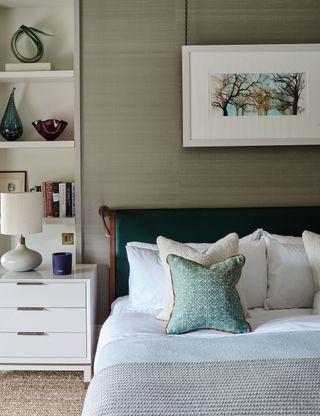
Bringing your pick of the latest interior design trends to your home as professionals do needn’t be costly or disruptive.
‘When choosing your furniture, you can splash out on a selection of core statement pieces, and to ensure that they remain fashionable you can surround them with luxury home accessories that can be swapped out when new trends emerge,’ says Sam Hood, co founder and chief creative officer for AMARA.
‘Most furniture centerpieces can be kept up to date by simply changing the pillows, throws, or other accompanying accessories.’
5. Introduce paneling
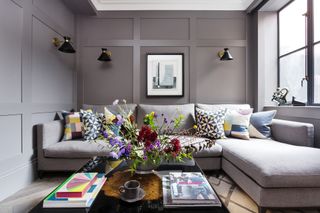
Consider paneling to elevate rooms around a home. ‘A popular trend over the past few years, wall paneling can dramatically enhance a living space and add a professional touch to any room,’ says Juliette Thomas.
‘Originally an ornate feature from the 13th century, paneling is now having a resurgence in both traditional and modern properties and is an excellent way to decorate cupboards, doors, walls, shelves and more.’
6. Take light into account
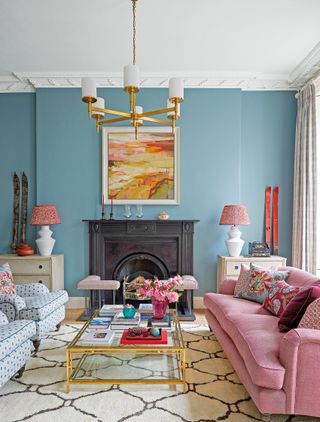
Another pitfall for the unwary the professionals avoid? Failing to take different light into account.
‘Whilst many people will apply paint samples directly onto the walls, this actually only gives you part of the picture,’ says Sam Hood. ‘A simple tip is to paint sheets of paper and place them at various spots around the room.
‘Some colors will look noticeably different under bright light or in areas of shade, so it’s important that you make sure your chosen color fits the room in all light conditions. By painting sheets of paper, it allows you to move the samples all around the room.’
7. Create continuity
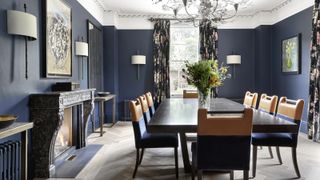
Subtle continuity can give a home the look a designer would create. ‘A professional designer knows how to utilize color trends and join spaces within a home to simultaneously pull off individual rooms while ensuring a cohesive palette that pulls the whole design scheme together,’ says Kristin Kong.
‘Make sure a multi-room design scheme includes some unifying colors, materials, or patterns.’
8. Go bold on walls and ceilings
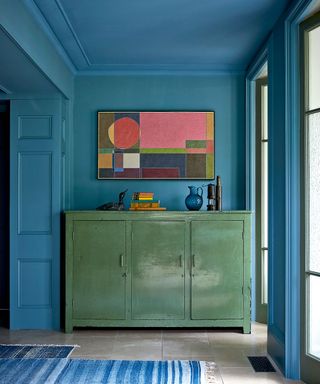
We’ve already mentioned the benefits of paneling, but team it with confident color and you’re onto a winning formula.
‘In terms of making rooms look professionally decorated we find the use of paneling and strong colors on all walls and the ceiling creates the impact that only a professional team would be ambitious enough to achieve,’ says Michelle Katz, managing director, Q Design House.
‘However, it is actually a very budget friendly and easy way to achieve the effect. You can see an example of that in the green study here.’
9. Work confidently with pattern
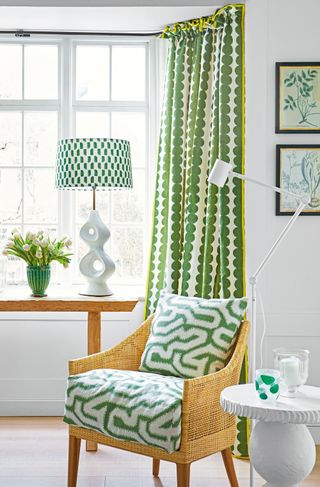
Combining different patterns can result in an interior that says professionally decorated, but how to pull it off successfully?
‘As a starting point, work with three fabrics and the key is to vary the scale of the patterns for a professional-looking, designer feel,’ explains Debbie Leigh, design manager, ILIV.
‘For example, if you pick a large-scale pattern as your main one, the second should be half the scale or size of the first, such as a large floral paired with a plaid or geometric pattern. The third can then be similar to either of the first two but using matching colors.
‘When mixing two or three patterns, it’s a good idea to also break them up with the clever use of plains either as plain pillows, trims, or borders.
‘If you are unsure, try looking at companion fabric books. These have been carefully selected by fabric companies as pre-mixed harmonious patterns. Alternatively, try collecting samples and creating a mood board to ensure everything works together before starting on the actual room.’
10. Step away from convention
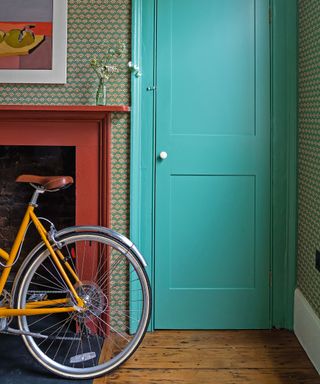
Follow the lead of professionals and make your room schemes unexpected, recommends BIID registered interior designer Emma Green.
‘Think a little outside the box, so instead of all white, use a darker, bolder room color or paint the woodwork darker than the walls,’ she says. ‘A very contemporary and stylish look.’
Sign up to the Homes & Gardens newsletter
Design expertise in your inbox – from inspiring decorating ideas and beautiful celebrity homes to practical gardening advice and shopping round-ups.

Sarah is a freelance journalist and editor. Previously executive editor of Ideal Home, she’s specialized in interiors, property and gardens for over 20 years, and covers interior design, house design, gardens, and cleaning and organizing a home for Homes & Gardens. She’s written for websites, including Houzz, Channel 4’s flagship website, 4Homes, and Future’s T3; national newspapers, including The Guardian; and magazines including Future’s Country Homes & Interiors, Homebuilding & Renovating, Period Living, and Style at Home, as well as House Beautiful, Good Homes, Grand Designs, Homes & Antiques, LandLove and The English Home among others. It’s no big surprise that she likes to put what she writes about into practice, and is a serial house renovator.
-
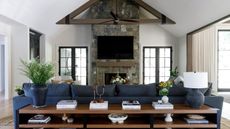 This is the one place in the home you should never steam clean – and what to do instead
This is the one place in the home you should never steam clean – and what to do insteadSteam cleaning hardwood could ruin your natural, beautiful flooring
By Dan Fauzi Published
-
 Claudia Schiffer uses a credenza to create a '70s-inspired statement in her entryway – experts say it has surprising wellness benefits
Claudia Schiffer uses a credenza to create a '70s-inspired statement in her entryway – experts say it has surprising wellness benefitsThe model's credenza taps into the low-slung furniture trend, evoking a calming ambiance with a retro spirit that experts love
By Hannah Ziegler Published